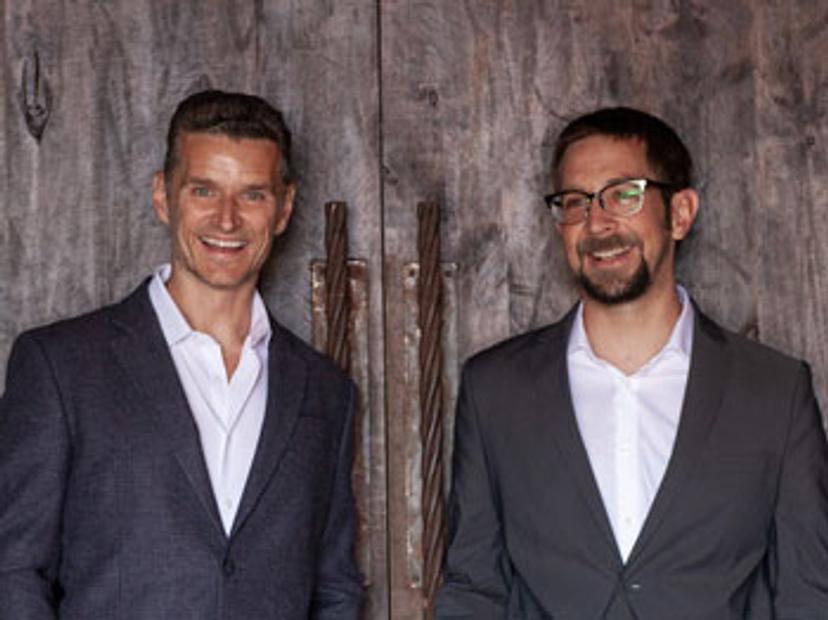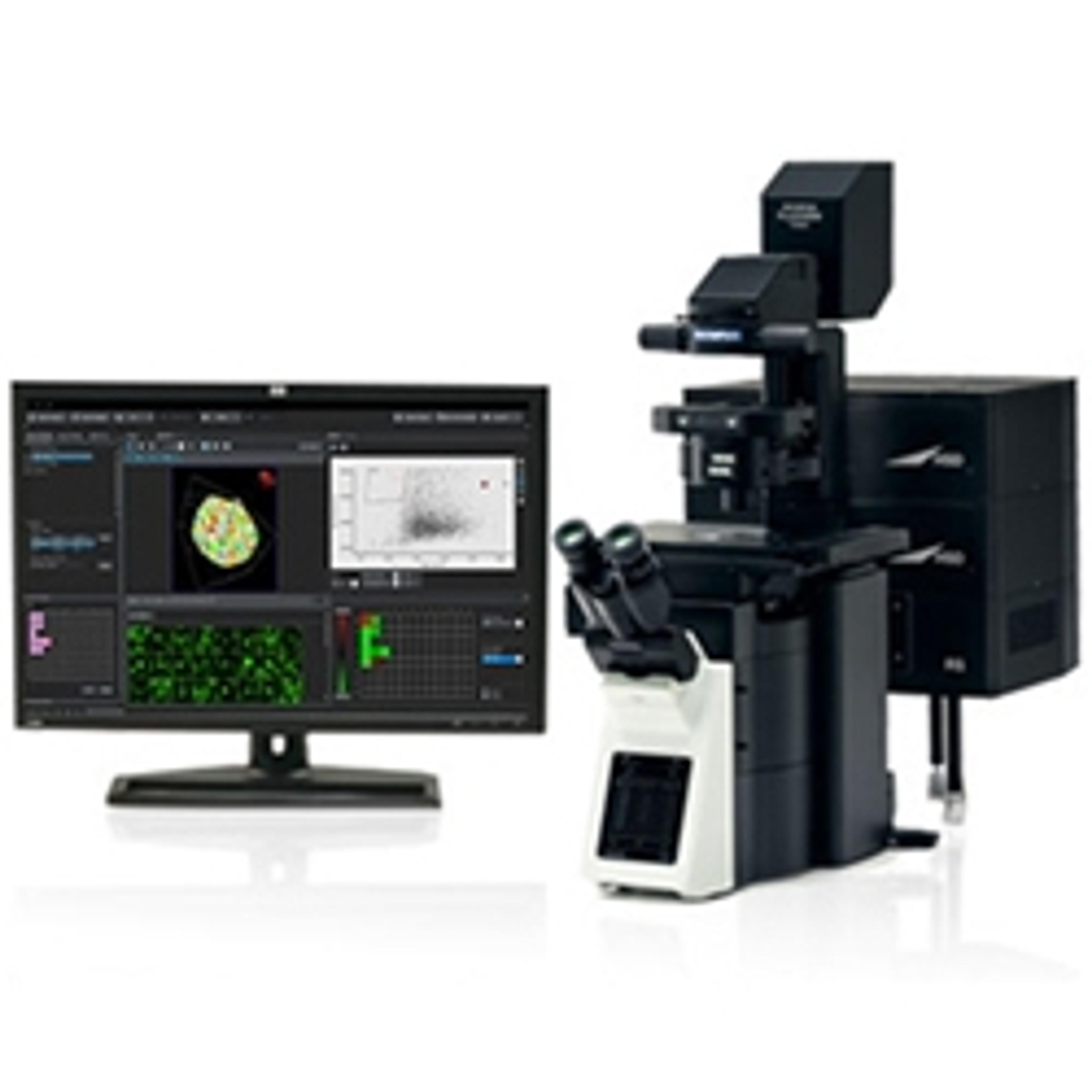Helping scientists succeed: A revolution in scientific collaboration
Dr. James Evans explains how his expert team help other drug discovery companies grow and succeed, and highlights the power behind scientific collaboration, sharing ideas, and teaming up to win
29 Oct 2020
In this exclusive interview, we speak with Dr. James Evans, founder and CEO of PhenoVista Biosciences, to find out more about how he helps other scientific businesses thrive by granting them direct access to the latest cutting-edge technologies, techniques, and expertise in imaging and assay development. Evans also discusses how he overcame the many setbacks associated with 2D and 3D cell culture, his thoughts on the future using AI and deep learning, and explains how his collaboration with Olympus helps his company achieve its business goals.

Cell biologist turned CEO, Dr. James Evans, and CSO Anthony Essex founded PhenoVista Biosciences back in 2014. Since then, PhenoVista has grown into a global service-based business, providing drug discovery and other scientific companies with direct access to world-class resources to help them achieve their goals. Companies working with PhenoVista can expect to use the latest technologies and access a team of professionals with expertise in biological models, imaging and assay development. “We work to provide quantitative fluorescence microscopy services to the biotech and pharma industries, however, we also work closely with agriscience, diagnostics, and technology platform companies that develop microscopes, cells and reagents,” explains Evans. Rather than re-inventing the wheel, the PhenoVista team brings together the most advanced technologies from leading providers to meet the needs of their clients. “I often use the analogy that we are like a fancy farm-to-table restaurant. Although we don’t build the tractors, plow the fields, or make the silverware, our team of world-class “chefs” listen closely to the needs of our clients and carefully craft for them the most delicious dish using the best ingredients and recipes,” states Evans. When Evans and Essex created PhenoVista, it soon became apparent how valuable their company could be to other businesses, “I realized that smaller companies, such as startup biotech companies, did not necessarily have the funds or the drive to invest in specialized, expensive high-content instrumentation and infrastructure. So, we thought, let us set up a business,” shares Evans. PhenoVista prides itself on catering its services to both profitable clients and small VC-funded biotechnology companies. “Our well-known pharma clients have everything we have and more, yet they still choose to come to us for our services because we have the niche expertise, collaborative mindset and creative problem-solving spirit to get them the data they need,” Evans continues. “With that momentum behind us, we have been able to grow the company at a phenomenal rate.” The company aims to solidify its recognition as the leading provider of high-content assay services globally.
Scaling up: From 2D to 3D
PhenoVista has focused on delivering services dedicated to two-dimensional (2D) analyses via induced pluripotent stem cell (iPSC)-derived neurons for co-culture purposes. The expert team expanded its focus to two-and-a-half-dimensional (2.5D) models before moving their attention to primary cell cultures, microfluidic platforms, tumor-derived cells, and now 3D organoids. Evans explains how throughout his time in academia, he primarily worked with 3D and 3D time-lapse deconvolution microscopy. “I understand that there are many challenges and setbacks associated with 3D analysis, which is why I choose to apply the Olympus NoviSight to our work,” shares Evans. “The data sizes we have are so large that managing and handling these image files and data is a challenge. We need to be able to control all of the information and have the data infrastructure to keep it secure and backed up”. In order to effectively visualize and troubleshoot information, it is essential that the team at PhenoVista is able to effectively load images and data simultaneously and present the data in a meaningful manner to clients.
Collaborative excellence
PhenoVista understands the power of communication and collaboration in science. The team works hard to ensure it has listened to its client and fully understood their unique needs and future goals. “We really do try to have our ears open and listen to what the client wants,” explains Evans. “We carefully plan to identify how we can meet those expectations.” This approach has led to the group receiving a wealth of positive feedback: “Many of our customers come back to us and state that we are unlike most CROs as we tailor our services to meet their individual needs." Since science does not always go to plan, PhenoVista works with its clients to design experimental plans that incorporate flexibility to maximize the likelihood that projects are completed on time and with the highest quality, most relevant data possible. “Clients choose to work with us for many reasons, particularly due to the collaborative and bespoke service we provide,” shares Evans. “While we do provide assay services using more traditional 2D cell lines, one of the major aspects that sets us apart from others is our comfort in performing services with more difficult models such as iPSC-derived cells, primary cells, blood cells, microfluidics and 3D spheroids, tumor fragments and organoids. We provide access to a full range of cutting-edge high content services, there's nobody else in the world doing this as a service.”
Despite PhenoVista’s recent success, setbacks are inevitable. “Especially given the current challenges associated with the pandemic, it is more important than ever to make sure that our teams include rigorous cross-training to minimize delays in clients getting their data on time,” explains Evans. “Our whole corporate culture is based on teamwork.” Feedback from clients, especially those in dense biotech hubs such as Boston and San Francisco, has included comments that working with PhenoVista helped them maintain project momentum when faced not only with COVID-related lab access issues but also with turnover of key staff that can sometimes bring a project to halt for months. As a result, PhenoVista clients can expect to have long-term, consistent support and results.
Tools for success
Through scientific advances, there is no doubt that the market for 3D cell-based assays is changing and so is the equipment needed for its success. “The market demand for 3D services is growing. There is a lot more work needed in 3D studies and this can be expensive,” says Evans. To reduce high costs, Evans explains that his company must ensure its processes are in line with higher-throughput systems, which is why he decided to collaborate with Olympus. “We use the NoviSight system from Olympus, which enables us to perform cell-level analyses for 3D structures in a multi-well format. There are other platforms out there that will allow us to perform a very intricate sub-cellular analysis in the 3D environment, but it tends to be limited to a handful of data files or Z-stacks,” Evans continues. “The NoviSight software really lets us answer questions for clients. For example, we have questions such as, ‘tell us what percentage of our organoids have greater than 20 dividing cells’ or ‘which one of our organoids have a particular marker gene expressed above a certain level and what’s the distribution of those cells?', and we can answer those questions for them in quite a straightforward manner.”
Future outlooks
Looking ahead, the team at PhenoVista has been exploring applications of artificial intelligence (AI) and machine learning. “3D analysis is very data intensive, time consuming, and costly compared to more conventional 2D approaches. We now aim to increase our efficiency to reduce costs and generate as much value as we can by using more sophisticated algorithms to zero in on the most robust output features.” Evans goes on to highlight that machine learning, deep learning, better algorithms, and AI are the next steps to help his team achieve these new goals.

